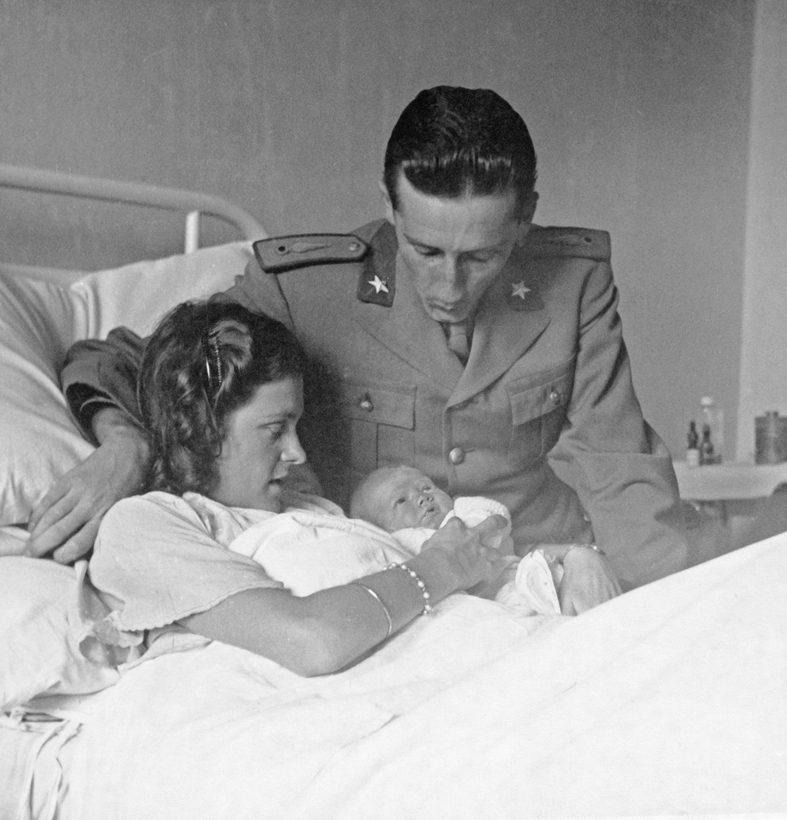Among the Nazis’ sinister borrowings from medieval tradition was the concept of Sippenhaft—“kin liability”—which they invoked to justify persecuting relatives of their opponents. This zeal for guilt by association reached its peak after the failed attempt to assassinate Adolf Hitler in July 1944, when SS chief Heinrich Himmler rounded up nearly 200 of the conspirators’ family members. These “prisoners of kin” included Fey von Hassell, daughter of Ulrich, a former German ambassador to Italy and longtime opponent of Nazism, who was executed for his connections to the July plotters.
“A Bunch of Gangsters”
Though not actively involved in the German Resistance, Fey, we learn in British historian Catherine Bailey’s account of her tumultuous early life, was a precocious convert to the anti-Nazi cause. While still a teenager during the 1930s, she recorded her father’s dismay at how their country had been taken over by “a bunch of gangsters” in her diary, which went miraculously unnoticed by Gestapo spies masquerading as servants at the German Embassy in Rome.
For the stratospherically grand Hassells, moral outrage at Nazi crimes commingled with disgust for the undiplomatic manners of their new overlords. When Hermann Göring visited the Eternal City in early 1937, the Luftwaffe commander prowled about a ball held in his honor, boasting that his wife owned emeralds far bigger than those worn in the tiaras of the local nobildonne. One Roman hostess later voiced her disappointment, upon meeting Himmler and his henchman Reinhard Heydrich, that the SS chiefs did not measure up to “the statuesque blonds” they had come to expect from the Nazis. Like The Damned, Luchino Visconti’s film about the demise of the old aristocratic order during the early years of Nazi rule, the first few chapters of A Castle in Wartime teem with such Grand Guignol grotesquerie on all sides.
Fey von Hassell’s diary went miraculously unnoticed by Gestapo spies at the German Embassy in Rome.
With his dueling scars and impeccable dress sense, Hassell, who became close to Mussolini, fit right in with Roman high society. But, in late 1937, the ambassador fell out of favor with the Nazi hierarchy and was dismissed from his post. Back in Germany, he soon began to conspire with fellow members of the traditional Prussian elite to bring down a regime they had helped usher into power. Bailey tends to play down Hassell’s initial ambivalence toward the Nazis, whose opposition to the Versailles Treaty and irredentist ambitions chimed with his own conservative nationalism. The nuances of the diplomat’s evolution from reluctant fellow traveler to Resistance hero thus become somewhat obscured in her book.

Bailey is more assured when recounting the torments undergone by Fey, whose story serves as a poignant illustration of how even the most charmed existence could unravel amid the vicissitudes of total war. Having married an Italian cavalry officer, Detalmo Pirzio-Biroli, Fey returned to Italy in 1940. Detalmo too was born to the deepest purple. His family owned a palazzo in Rome along with a 12th-century castle and estate near Udine, where Fey swiftly delivered an heir and a spare while her husband managed to wangle a cushy posting nearby.
Turning Tides
What had been a quiet war for the young couple took a perilous turn when the Italian government switched sides in September 1943, whereupon German troops flooded into Northern Italy and requisitioned their villa. Detalmo then joined the Italian underground in Nazi-occupied Rome, leaving his wife to cope with their uninvited guests and the enmity of local Communist partisans, who took Fey for a collaborator.
By the time of Claus von Stauffenberg’s failed coup d’état against Hitler, that threat had receded thanks to the intervention of a moderate partisan group linked to Detalmo. Unaware that her father had been arrested in Berlin at the end of July 1944, Fey herself was arrested the day after his execution in September and eventually dispatched to Stutthof concentration camp, near Danzig, after being separated from her children. There she was held in a special barrack with other relatives of the July plotters, whom Himmler was apparently hoping to use as hostages in possible negotiations with the Allies, until the SS shifted them westward to escape the Soviet advance.
A poignant illustration of how even the most charmed existence could unravel amid the vicissitudes of total war.
Echoing her experience with the Italian partisans, Fey was now confronted with the dismal irony that she was probably safer under Nazi protection than in Soviet hands. She was also falling in love with a fellow captive, Stauffenberg’s poetic-minded brother Alex. His part-Jewish wife, Litta, a highly decorated Luftwaffe test pilot and perhaps the most remarkable character in Bailey’s book, managed to keep track of the prisoners as they were shunted across the crumbling Reich by flying from camp to camp in a tiny plane, until she was shot down and killed.

Once Himmler’s attempts to negotiate with the Allies had failed, the prisoners only escaped execution thanks to a fortuitous set of coincidences. A further stroke of luck allowed Fey’s mother to track down her grandsons in an Austrian orphanage in June 1945. Bailey chronicles all these twists and turns with verve and compassion in a book that illuminates individual human helplessness and fortitude in the face of overwhelming historical upheaval.
Max McGuinness is the New York theater critic for the Financial Times


